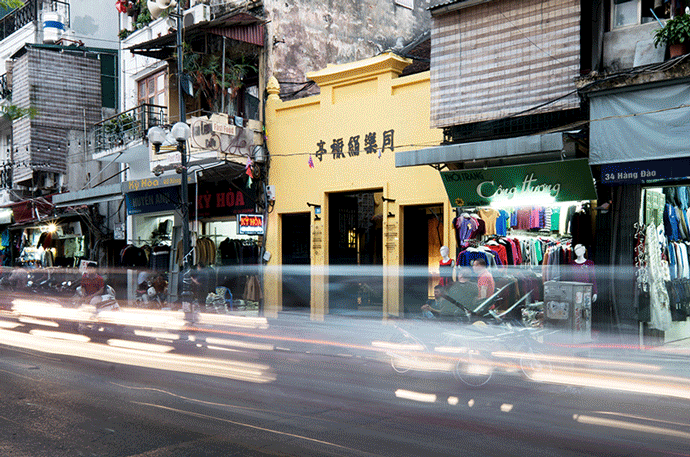
- Interior Design
- In Progress
- Various (2015-In Progress)

Since 2015 a continued collaboration exists between G8A and the Vietnamese luxury brand Hanoia. With completed projects in Hanoi and Ho Chi Minh City, and others progressively in development, the central design proposition pays witness to G8A’s keen and longstanding interest in Vietnamese cultural and urban typology. Each project has been integrated into zones of
Since 2015 a continued collaboration exists between G8A and the Vietnamese luxury brand Hanoia. With completed projects in Hanoi and Ho Chi Minh City, and others progressively in development, the central design proposition pays witness to G8A’s keen and longstanding interest in Vietnamese cultural and urban typology.
Each project has been integrated into zones of historical importance, or specific typological interest. From the early Chinese shophouses of Old Hanoi, to the colonial courtyard block of the Metropole Hotel, the tubehouse in Ho Chi Minh City, and the airport market-typology, each project develops on the concept of the “architectural promenade”. That is, the experience of space and movement directed by a series of sequences with constructed views, vistas and understandings.
This journey is an opportunity to create a specific and contextual experience linked to Vietnamese cultural and typological identity.
Hanoia House was the first project completed in 2015. The horizontal voyage rhythms the passage through the rooms with openings onto skyview courtyards. This sensation of immersion is highlighted by the extraordinarily narrow configuration, drawing the visitor deep into the dense urban fabric of the Old Quarter. Choices of materials allow the user to revisit elements of the surrounding context, with the use of silk screening an echo to the past life of the street, the historical epicenter of regional silk trade.
Hanoia Metropole, the second in the series, is nestled in the east wing of the Sofitel Metropole complex, steps from the Opera House in the historical French Quarter of Hanoi. Placed in a minimal plot, no bigger than a hotel room, G8A decides to transform the space into a “vitrine typology”. In contrast to the experience of depth of Hanoia House, here is proposed a single layered spatiality that can be lived by the viewer from the sidewalk. The use of moucharaby brick as background effectively absorbs dimensions of volume and highlights the powerful depth of materiality found in the lacquerware products on display.
The southern Hanoia counterpart in Ho Chi Minh City is found in the commercial epicentre of District 1, in a context where the rise of land pricing has pushed the traditional courtyard typology to grow vertically while keeping its elongated footprint sacrificing natural light and ventilation. The multilevel space allows for further exploration of the “architectural promenade”.
While entering the space, a boutique-product lift hints at the continuation of the journey. Meandering up to the second level a pause is welcome on the landing where users discover a “hidden” room displaying the making of Hanoia products and ancestral lacquer tech-niques. The voyage ends with a lounge area overlooking the street view, the visitor becomes part of the display, a cyclical promenade experience.
The latest completed project Hanoia Noi Bai is presented in the international terminal of Hanoi Airport, it proposes a new exploration of typology concerning itself with an alternative interpretation of Vietnamese market-display. G8A was led by the surrounding context to question the relevance of abundant displays, and to explore the potential of discovery and the imaginary. Following the materiality explored in the previously established retail spaces, G8A uses bricks, dark stone tiling, silk cording, and natural brut elements placed in contrast with details of polished brass and bright lacquer.
- ClientOpenAsia Group
- ProgramInterior Design
- StatusIn Progress
- PhotoLe Hai Anh, Quang Dam & Duy Thanh Nguyen